A highlight of any trip to Egypt is visiting the temples of Luxor and Karnak. Luxor was the capital of ancient Egypt for much of its history and the temples are huge complexes. We had hoped to take a hot air balloon ride over the site, but the sandstorm the day before made the visibility too low.
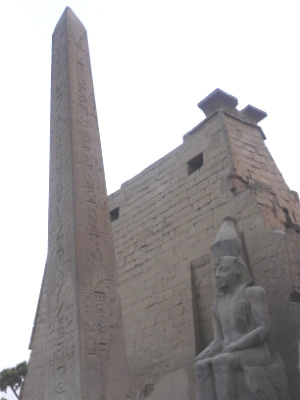 |
|
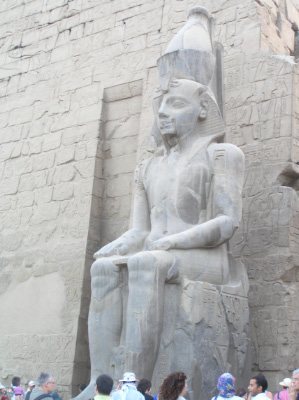 |
We visited Luxor Temple in the late afternoon and began with one of the few standing obelisks left in Egypt (most have been appropriated by other countries) and a monumental statue of--who else?--Ramses II.
|
|
These statues of Ramses are not quite as large as the ones at Abu Simbel, but they are still pretty eye-catching.
|
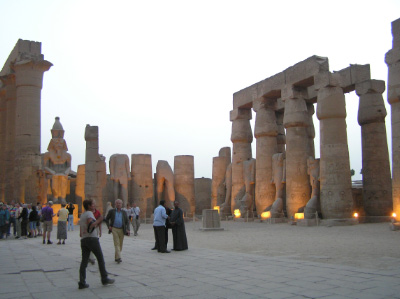 |
|
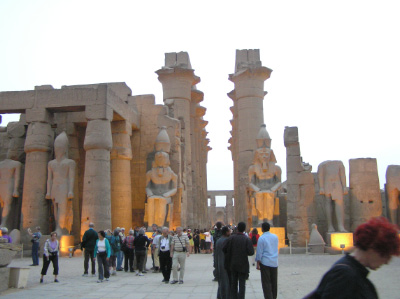 |
Luxor is a large complex of courtyards and temples, and this is the main Courtyard of Ramses II (of course) into which you enter.
|
|
More statues of Ramses, leading to the Colonnade of Amenhotep III (the pharaoh who began building Luxor around 1350 BC).
|
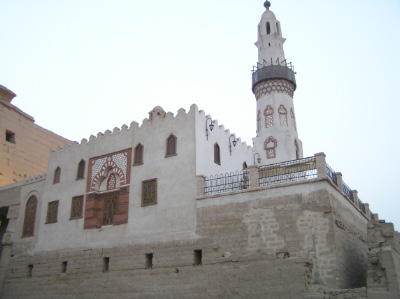 |
|
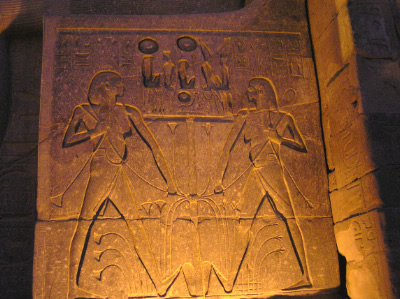 |
Most of the temple was covered with sand until the 19th century, so a mosque was built over part of it. When Luxor was excavated the mosque was left in place, looming over the Ramses Courtyard below.
|
|
Because it was buried for so long, the temple carvings are well preserved. This carving represents the unification of Upper and Lower Egypt under the pharaohs.
|
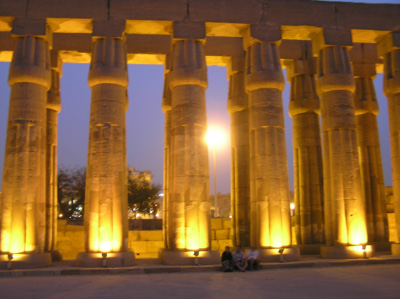 |
|
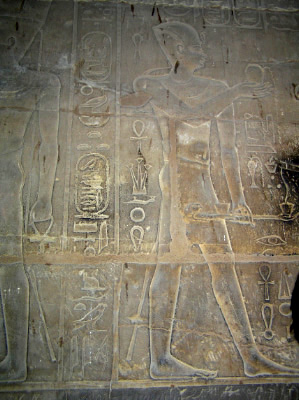 |
The Colonnade of Amenhotep III, with its papyrus-capital columns, is the oldest part of the temple.
|
|
Because Luxor was so important, many later pharaohs added their own touches. This figure is Alexander the Great--one of the few temples to which he was added.
|
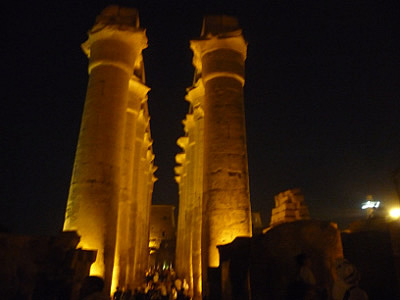 |
|
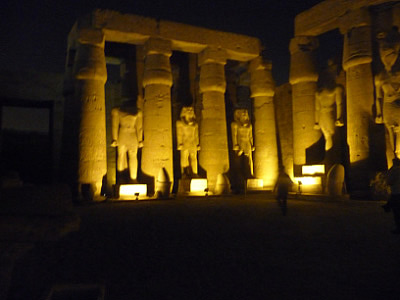 |
As darkness falls, Luxor is lighted up and becomes a beautiful structure with interesting light and shadows.
|
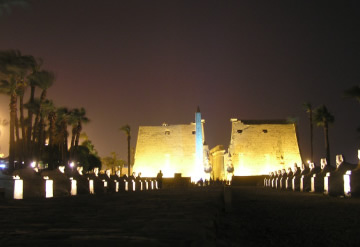 |
|
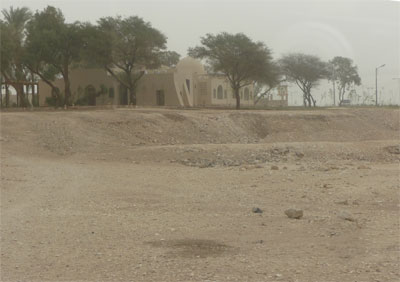 |
In front of Luxor is an Avenue of Sphinxes, which is also lighted at night.
|
|
The house of Howard Carter, the discoverer of the tomb of Tutankhamen, in the Valley of the Kings. "Tut" was a very minor pharaoh, but he has become a major figure in Egyptian tourism.
|
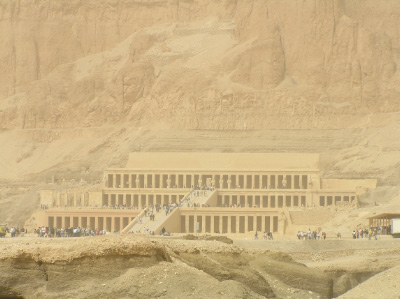 |
|
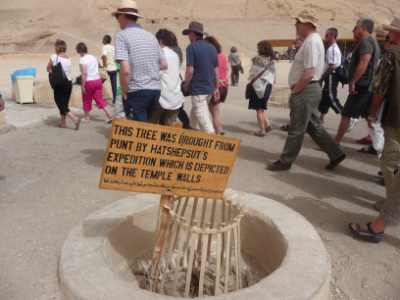 |
The Temple of Hatshepsut was built by the only woman ever to reign as pharaoh in her own right. However, the temple is almost entirely (75-80%) reconstructed.
|
|
Hatshepsut organized an expedition to "Punt," now thought to be around Somalia. The expedition brought back myrrh trees, of which this is allegedly the original root.
|
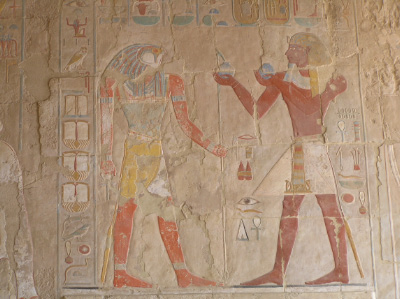 |
|
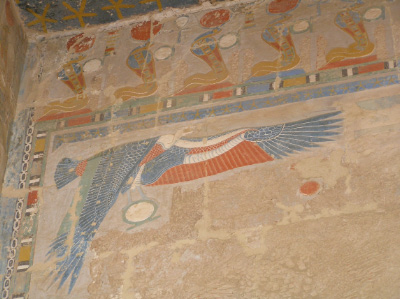 |
Some of the original paintings in the temple include Hatshepsut (shown as a male pharaoh) making offerings to Horus.
|
|
Nek, the white-headed vulture goddess, along with the sacred cobras, which symbolized protection for the pharaoh. It didn't work--Hatshepsut's successor destroyed her temple and defaced her name everywhere it appeared.
|
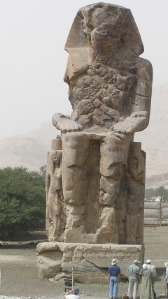 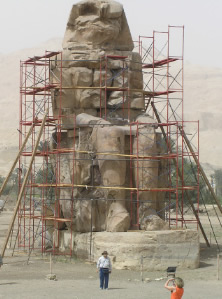 |
|
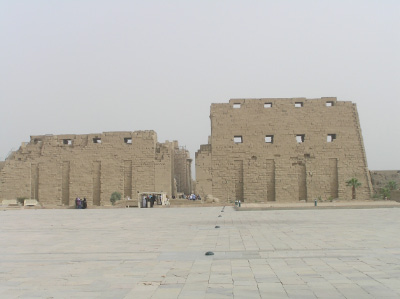 |
We also stopped for a quick look at the statues of Memnon (which are not actually statues of Memnon but are always called that).
|
|
The other major temple complex in Luxor is Karnak, which was started as a temple of Amun around 2000 BC and was added to for about 1300 years.
|
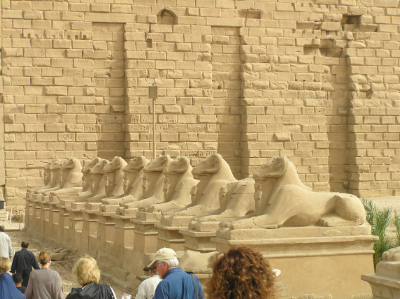 |
|
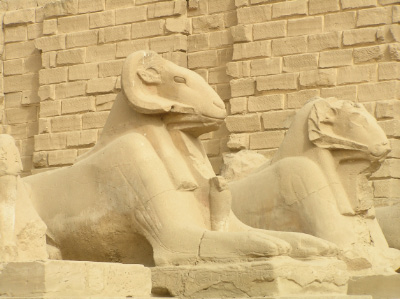 |
Like several other temples that we saw, this one is also approached through an Avenue of the Sphinxes.
|
|
These sphinxes, though, are a little different because they have rams' heads on lions' bodies.
|
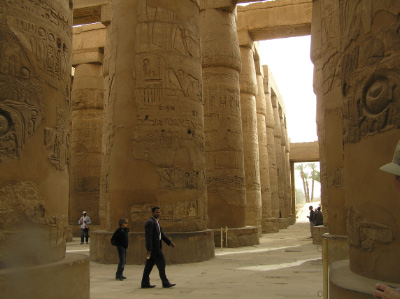 |
|
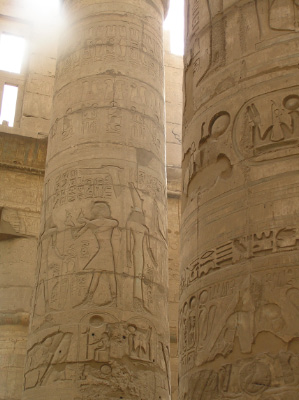 |
The Hypostyle Hall has 134 columns arranged in a huge rectangle.
|
|
Each of the columns is carved with various figures, cartouches (names of pharaohs), and hieroglyphics.
|
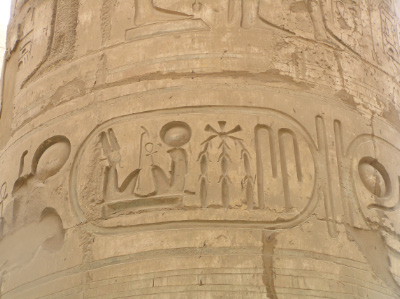 |
|
 |
Naturally there are statues of Ramses II, and there are also a number of his cartouches.
|
|
One of the two obelisks at Karnak. As you see it standing there, you really have to wonder how the Egyptians got it into place (no one really knows).
|
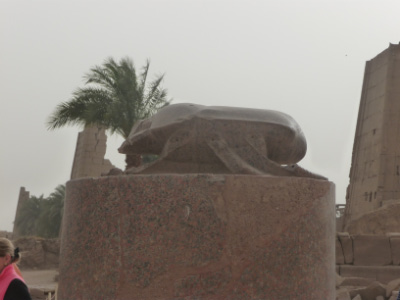 |
|
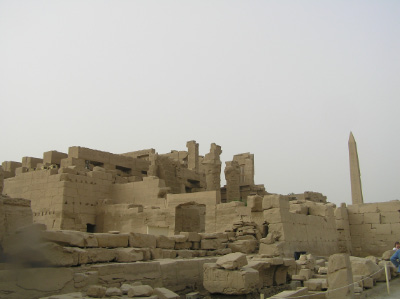 |
The statue of a scarab beetle is usually surrounded by people walking around it. Circling it clockwise seven times brings good luck--marriage if you are single, children if you are married. It was not clear whether circling it counterclockwise resulted in divorce.
|
|
Since Karnak is huge, large parts of it are still under excavation and reconstruction, so much of the "back area" is a jumble of stones, inscriptions, and walls.
|
Across the river from Luxor are the Valley of the Kings and the Valley of the Queens, the burial place of many of the most famous pharaohs, including Ramses II and King Tut. We visited the valleys and the tomb paintings were amazing--glowing with colors and full of details about everyday life, but, alas, no photography is allowed there.







































